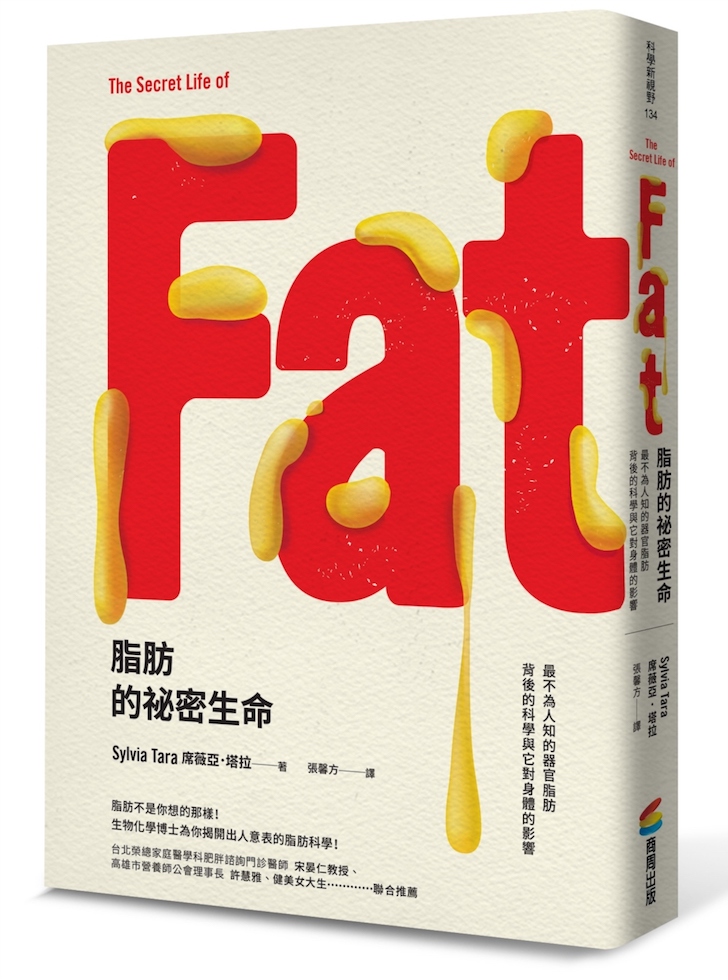現代人和脂肪的永恆戰爭
出國唸大學時,老媽總是叮嚀:「一個人在外面,要好好照顧身體,記得多吃點」;三十而立後,老媽還是叮嚀:「一個人在外面,要好好照顧身體,記得少吃點」⋯⋯
我從前很瘦,大學到碩一都只有五十幾公斤,不曾超過六十公斤。先是 SARS 的錯,不是得了 SARS 會讓身子暴胖,是因為我太會流汗,所以運動就是幾乎天天游泳,但 SARS 讓學校關閉了游泳池,於是在碩士班畢業前,十週暴胖十公斤,從此再也回不去了。小我三歲的弟嘲笑我吹了氣球的身材,我狠狠地警告他:三年後就輪到我嘲笑你!沒想到他上班後減少運動量,才兩年我就扳回一城了。
隨著年齡增長,新陳代謝下降,我又溫水煮青蛙地增胖了十公斤。現在回母校教書,和當大學生時相比,體重已經多了二十公斤左右。過去有幾次因改變飲食習慣加上增加運動量,最多能減個七、八公斤,但總是因為生活習慣改變、故態復萌,身上的脂肪又一次次鮭魚返鄉了⋯⋯
臨近中年,保持身材的壓力和難度更高,但卻不能不為。最近有資深的同事減重成功,分享動機時他說:看醫生時,醫生問他有沒有見過七十歲的大胖子?基本上沒有,因為他們不是瘦了,就是掛了!
過去在我們阿公阿嬤的時代,他們擔心的是人太瘦弱、營養不良,我們這個富足的時代卻相反地要擔心人太胖、營養過剩。過去無法理解什麼叫喝水都會胖,現在終於懂得自己的脂肪有多黏人。過了而立之年有此困擾的朋友著實不少,脂肪幾乎是共同的心頭之痛了。
當時去美國唸博士班時,還能感覺良好,因為居然有美國人問我是如何保持身材的⋯⋯對於老美來說,脂肪更是全民公敵。我有問老美朋友,他們明明也崇尚苗條的身材為美,可是為何一大多數美國人都過胖,得到的答案是,他們因為無法維持苗條的身材而壓力很大,只好用吃舒壓,可是吃了更胖,於是壓力更大,就吃更多⋯⋯這真是惡性循環啊。

另外,很多美國人都把可樂當開水喝,超市裡超高熱量的食物不勝枚舉。有次我學弟室友把美國超市買的廉價糖霜奶油蛋糕送給我吃,我晚餐後才吃一小塊,就全身不舒服,倒地昏睡到第二天早上,後來發現只要吃到那種超高熱量的糖霜奶油蛋糕,我就會立馬血糖血脂爆表腦筋混沌,完全無法理解美國人怎麼沒控告超市謀財害命。
為了對抗有如恐怖份子的身體脂肪,美國人可歌可泣的戰鬥罊竹難書,而且還屢戰屢敗。為何一個人類成千上萬年求之難得的能量資源,今天卻這麼難以擺脫呢?雖然市面上已有汗牛充棟的書籍談論如何擺脫討人厭的體脂,但是有用嗎?或許我們迄今其實根本還未徹底瞭解這個敵人,所以才無法知己無彼而百戰全殆?生物化學博士席薇亞.塔拉(Sylvia Tara)的這本好書《脂肪的祕密生命:最不為人知的器官脂肪背後的科學與它對身體的影響》(The Secret Life of Fat),就是要帶領大家先來認識一下全民公敵,引用了大量最新的科學研究證據,讓你會對脂肪,有全新的認識。
與脂肪上演八點檔
我們身上的脂肪,並不僅是儲存能量,其功能居然五花八門,脂肪組織還會控制身體,以壯大其勢力。也因為脂肪過去幾萬年來是珍貴資源,所以我們身體一旦好不容易(但現在好容易啊)獲取它們,就捨不得抛棄,所以就因果關係而言,不是脂肪死命糾纏,是我們的身體故意把寵壞脂肪的,這根本就是灑狗血八點檔的畸戀爛劇碼啊。
然而,比八點檔更複雜的實情是,脂肪不單單是死纏爛打的肥宅,也是默默付出的工具人。我們不擅長珍惜自己擁有的,而想確認某個人事物對我們有多重要,毀了就知道!《脂肪的祕密生命》用幾個不幸的案例說明,如果沒了脂肪,會有多悲劇,令人驚心動魄。體脂,尤其是皮下脂肪,還有許多重要功能,太少容易受內傷,也無法維持免疫系統和生殖系統正常運作,因為許多正常生理功能都需要靠脂肪組織分泌的激素維持。
那為何過胖的人還會有一堆疾病?其實,脂肪與健康的關係不僅出在多寡,還在種類和貯存的部位。脂肪組織也有分好壞,一般來說,白色脂肪討人厭,但褐色脂肪卻是良友,累積在腰間的皮下脂肪很不妙,貯存在內臟的更糟糕。
我們曉得,減肥很少可以單靠多運動或少吃喝,這樣頂多只能不再增胖,因為影響脂肪堆積的因素實在太多了,遺傳、基礎代謝率、腸道菌相、飲食、運動、年紀、睡眠、性別參與了決定,爸媽的因素也或多或少有影響,甚至連祖父母、外祖父母的也有。更詭異的是,肥胖還可能是傳染病,病毒和細菌都來參一腳。
很多嚴格減重的朋友都有個經驗,就是對食物更加渴望。這不僅是心理因素,還包括生理因素,因為脂肪會影響食慾和意志力,所以減重失敗是身不由己的。席薇亞.塔拉會寫這本書,源自她的切身之痛,她也算是喝水就會胖的人,尤其是看到朋友隨便吃都不會胖,更是五味雜陳。因此,她先花三分之二的篇幅很專業地談脂肪的科學,後三分之一則不斷討論消滅脂肪的方法,包括她的親身參與減重實驗的自身經驗。
要減肥為什麼這麼難?來認識脂肪吧
當然,知道科學知識和價值觀選擇,可以完全是兩碼子事──清楚知曉脂肪不完全是敵人,和要保持什麼樣的身材,也是風馬牛不相及的。迄今為止,根本完全沒有在「不改變飲食和運動習慣,不減肌肉量只減體脂」的減重成功案例。如果什麼都沒做,體脂率就下降了,我想那很可能是重症的前兆,千萬別開心得太早。也就是說,無論我們視肥胖為疾病與否,都沒有一種神奇藥丸,吃下去了就能保持身材苗條,因為脂肪實在太複雜了,《脂肪的祕密生命》在這方面是個很好的知識參考。
隨著生命科學的進展,未來會不會有一天,我們只要服用一種保健產品,然後就不需要再改變生活習慣,就能保持身材苗條健美?這不是不可能,至少我很期待!
本文原刊登於閱讀‧最前線【GENE思書軒】,並同步刊登於The Sky of Gene。


















































